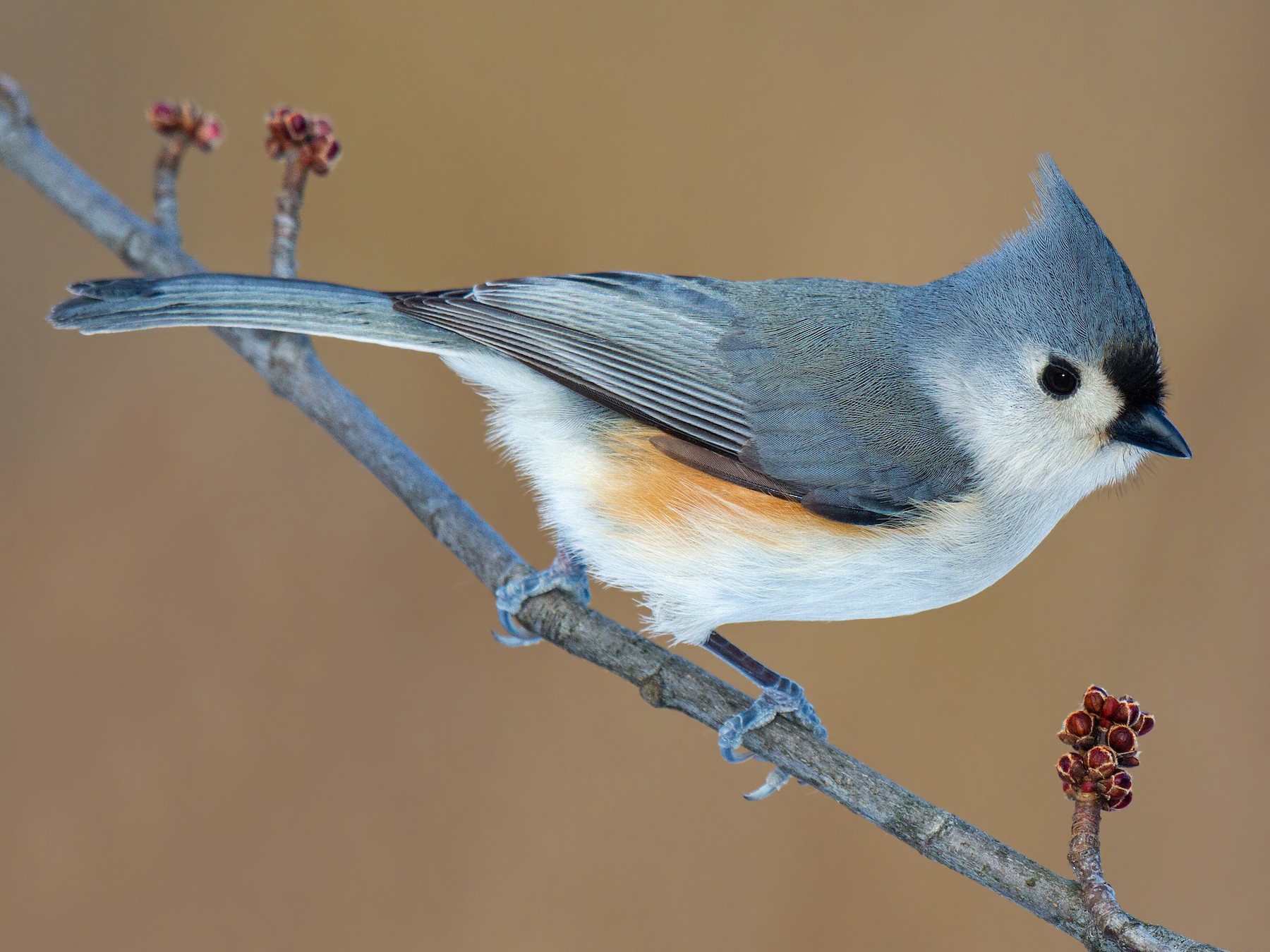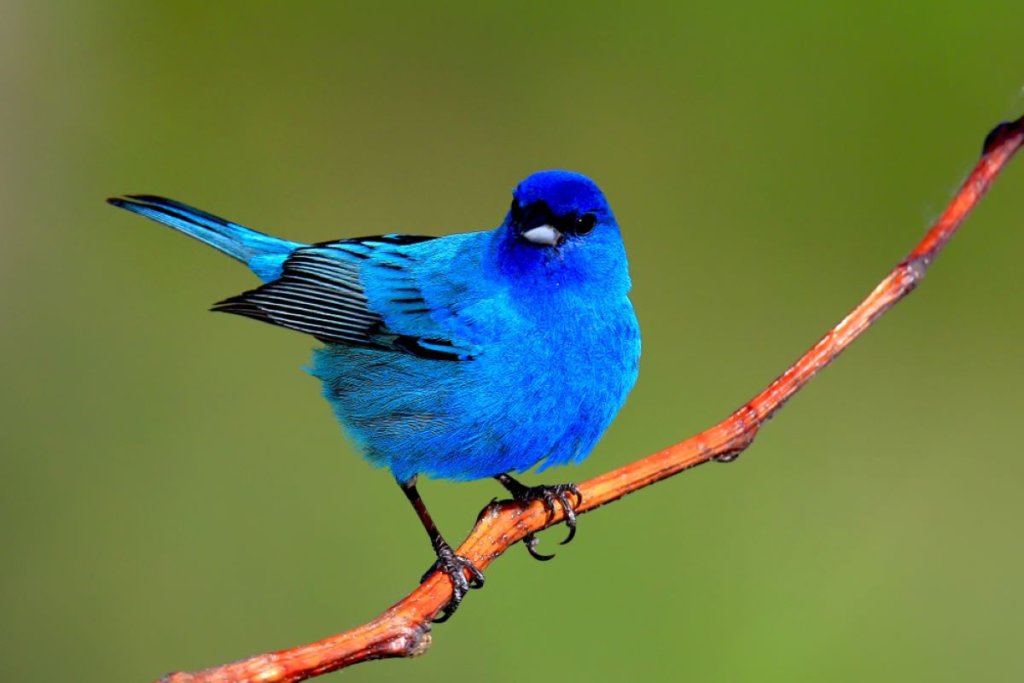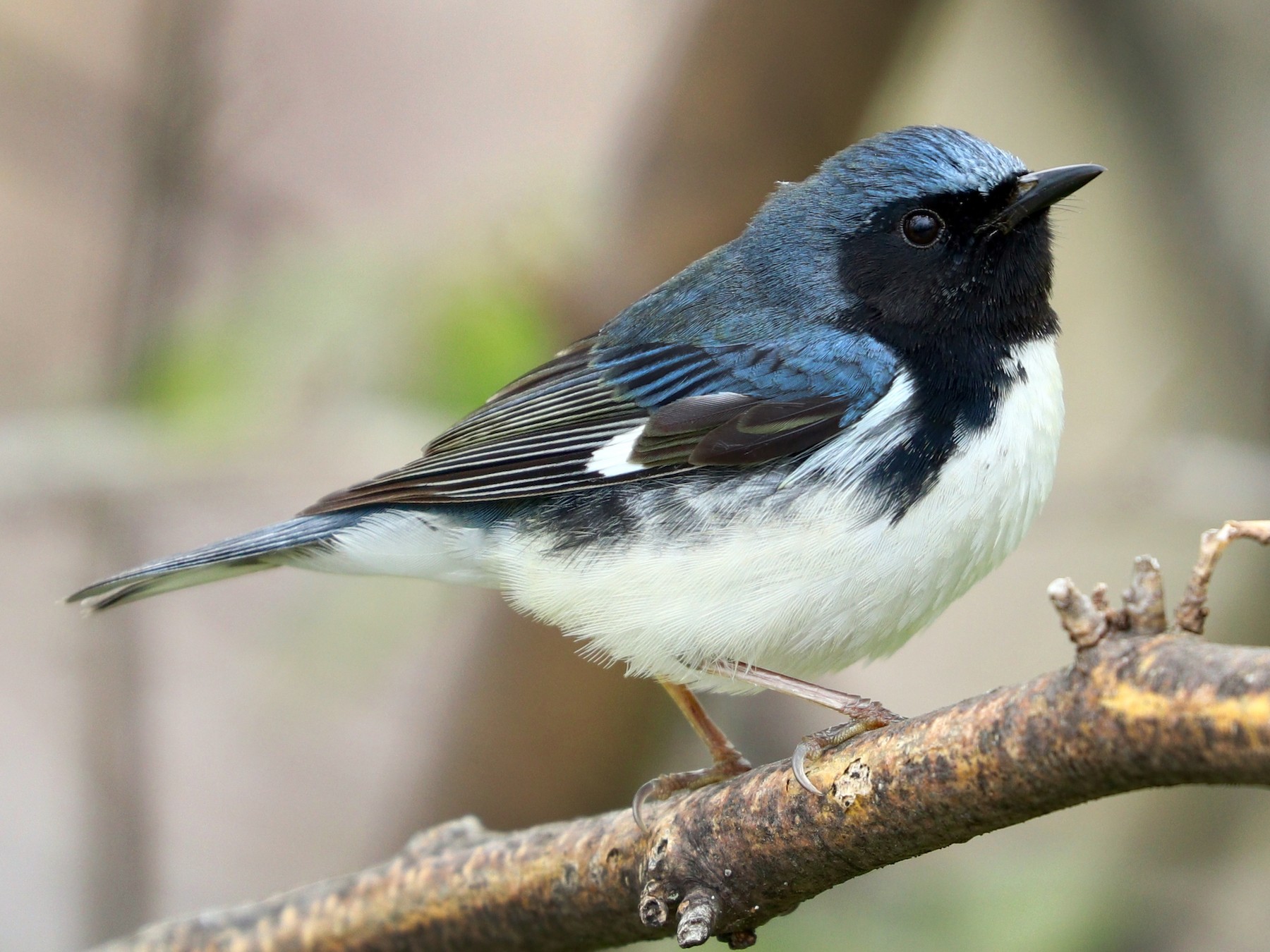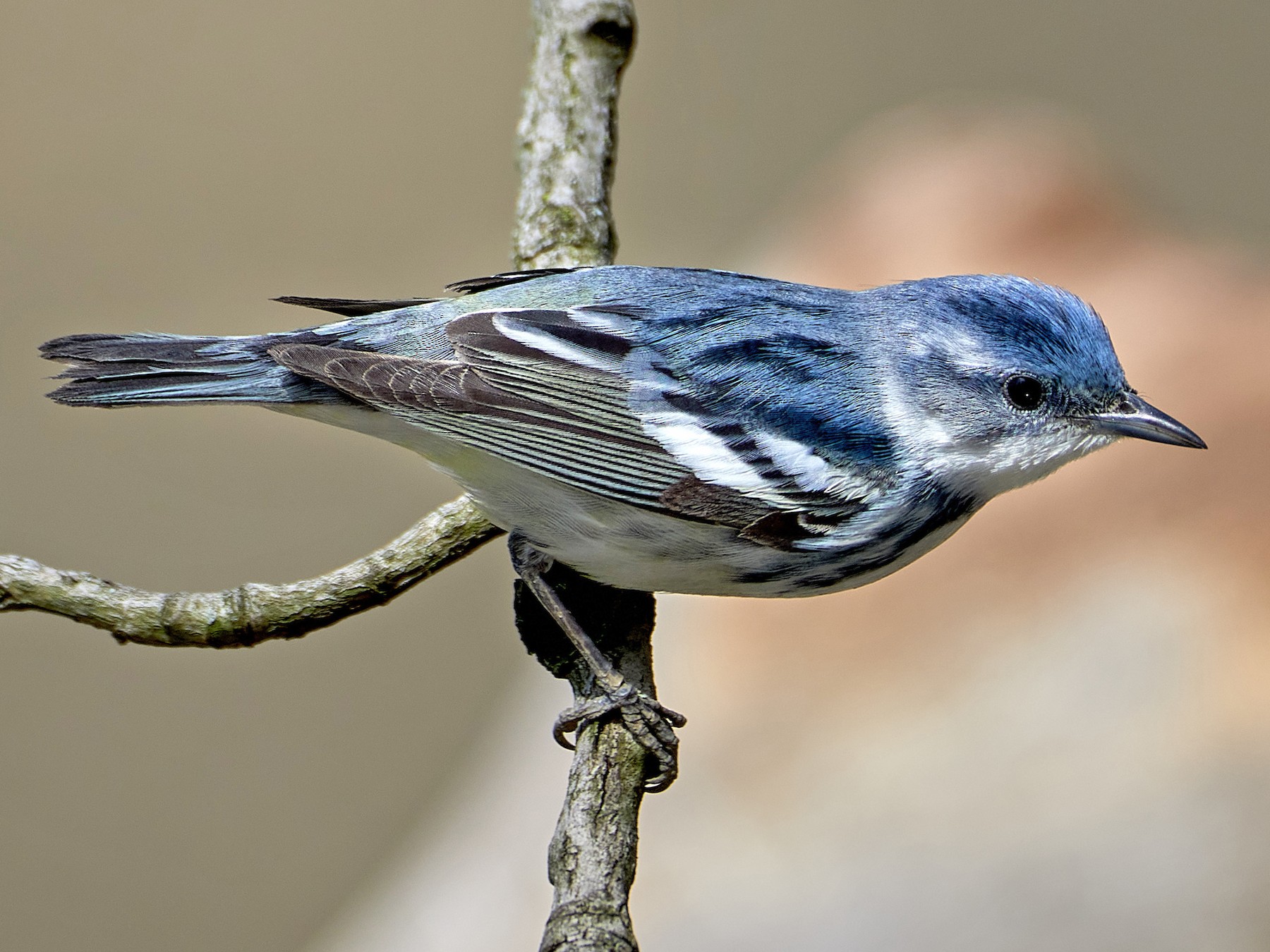Pennsylvania is home to a diverse range of bird species, including many beautiful blue birds. In this article, we will explore 15 different types of blue birds found in Pennsylvania, ranging in size from tiny to large.
We will provide information about their appearance, habitat, diet, and calls, as well as tips for identifying them and attracting them to your backyard.
You are reading: 15 Types Of Blue Birds In Pennsylvania
Whether you are a seasoned birdwatcher or just starting out, learning about these stunning blue birds is sure to enhance your appreciation of Pennsylvania’s natural beauty.

15 Types Of Blue Birds In Pennsylvania
Eastern Bluebird
The Eastern Bluebird is a beloved bird species in Pennsylvania and has been a symbol of conservation efforts in the state. These birds are widespread and live year-round in the far eastern parts of Pennsylvania, breeding throughout the rest of the state. They live in open country like farms, clearings, roadsides, and pine woods.
The Game Commission’s Howard Nursery, near Milesburg, has been manufacturing bluebird nest boxes and box kits for more than a quarter-century, and each year, about 9,000 kits are manufactured there and sold or provided to Pennsylvanians to help bluebirds.
Blue Jay
The Blue Jay is a familiar and stunning bird found year-round throughout most of eastern North America, including Pennsylvania. These birds live in wooded and partly wooded areas, including extensive forests, farm woodlots, suburbs, and towns.
They are the largest bird to regularly visit Pennsylvania bird feeders, measuring about 10 inches. Blue Jays have a blue back marked with black and white, pale gray below, and a prominent blue crest on their head.
They have a sturdy beak that is straight and sharp, well suited for a variety of tasks including hammering, probing, seizing, and carrying. Blue Jays are relatively slow flyers and are, therefore, quite vulnerable as prey for hawks and owls.
Barn Swallow
The Barn Swallow (Hirundo rustica) is a distinctive passerine bird with blue upperparts and a long, deeply forked tail. It is the most widespread species of swallow in the world, ranging over 251 million square kilometers globally.
These birds are found in Europe, Asia, Africa, and the Americas, and are a common sight in Pennsylvania. Barn Swallows are birds of open country that normally nest in man-made structures and consequently have spread with human expansion. They build a cup nest from mud pellets in barns or similar structures and feed on insects caught in flight.
Indigo Bunting

The Indigo Bunting (Passerina cyanea) is a small seed-eating bird in the cardinal family, Cardinalidae. It is migratory, ranging from southern Canada to northern Florida during the breeding season, and from southern Florida to northern South America during the winter.
These birds are small, measuring 11.5–15 cm (4.5–5.9 in) long, with a wingspan of 18–23 cm (7.1–9.1 in). The male is vibrant blue in the summer, with brightly colored plumage during the breeding season to attract a mate, while the female is brown year-round.
Read more : Can Birds Eat Dragon Fruit?
Indigo Buntings are small, stocky birds with short tails and short, thick, conical bills. They are often seen in farmland, brush areas, and open woodland habitats. The diet of the Indigo Bunting consists primarily of insects during the summer months and seeds during the winter months.
Blue-gray Gnatcatcher

The Blue-gray Gnatcatcher (Polioptila caerulea) is a small songbird native to North America. These birds are pale blue-gray with grayish-white underparts and a mostly black tail with white edges. They are tiny, slim songbirds with long legs, a long tail, and a thin, straight bill.
Blue-gray Gnatcatchers are widespread but not abundant and are often found in broadleaf forests and scrublands. They are known for their soft but insistent calls and their constant foraging for insects, often actively twitching their long tails.
These birds are fiercely territorial and may use vocal displays and postures to chase a rival as far as 70 feet. In this article, we will provide more information about the Blue-gray Gnatcatcher’s appearance, habitat, diet, and calls, as well as tips for attracting them to your backyard.
Black-throated Blue Warbler

The Black-throated Blue Warbler (Setophaga caerulescens) is a small passerine bird of the New World warbler family. Here are some key facts about this bird species:
Appearance:
– The male Black-throated Blue Warbler has a striking deep blue plumage above with black face and sides and white belly.
– The female is brownish-olive above and buffy below, with a white patch at the base of the primaries.
Habitat:
– The Black-throated Blue Warbler breeds in the interior of deciduous and mixed coniferous forests in eastern North America.
– It is often found in hilly and mountainous regions in the northeastern United States and southeastern Canada.
– During the winter months, it migrates to tropical wooded and scrub habitats in the Greater Antilles.
Diet:
– The Black-throated Blue Warbler feeds on insects, spiders, and other small invertebrates.
– During the winter months, it may also eat fruit and nectar.
Breeding:
– The Black-throated Blue Warbler is a monogamous species.
– Its breeding season usually begins in May and ends in July.
– The female incubates the eggs for 12-13 days.
Calls:
– The male Black-throated Blue Warbler sings a relaxed, buzzy I-am-so-la-zee on warm summer days.
In Pennsylvania, the Black-throated Blue Warbler is a rare but regular migrant and breeder in the state’s northern forests.
Blue Grosbeak
The Blue Grosbeak (Passerina caerulea) is a medium-sized North American passerine bird in the cardinal family Cardinalidae. Here are some key facts about this bird species:
Appearance:
– The male Blue Grosbeak is deep blue with both black and brown on its wings, while the female is mostly brown with scattered blue feathers on the upperparts and two brown wingbars.
– Both sexes are distinguished by their large, deep bill and double wing bars.
– The Blue Grosbeak is larger than an Indigo Bunting.
Habitat:
– The Blue Grosbeak is mainly migratory, wintering in Central America and breeding in northern Mexico and the southern United States.
– It is a stocky songbird with a very large, triangular bill that seems to cover the entire front of its face, from throat to forehead.
– Blue Grosbeaks are often found in shrubby or old-field habitats.
Diet:
– The Blue Grosbeak feeds on grains, seeds, and insects.
– They may be attracted to grains and seeds at feeders in shrubby backyards.
Breeding:
– Blue Grosbeaks breed along roads and open areas, building their nests low in small trees, shrubs, tangles of vines, or briars.
– Each mated pair may raise two broods of nestlings per year.
Calls:
– The male Blue Grosbeak sings a rich, warbling song.
In Pennsylvania, the Blue Grosbeak is a rare but regular migrant and breeder in the state’s southern regions.
Purple Martin
The Purple Martin (Progne subis) is the largest swallow in North America. Here are some key facts about this bird species:
Appearance:
– The Purple Martin is a large, broad-chested swallow with dark blackish-blue feathers that have an iridescent sheen, giving them a bright blue to navy blue or deep purple appearance.
– The males have a darker, more iridescent plumage than the females.
– They have stout, slightly hooked bills, short, forked tails, and long, tapered wings.
Habitat:
– The Purple Martin breeds in the eastern United States and migrates to South America for the winter.
– They are found in open areas near water, like fields, meadows, and wetlands.
– Purple Martins are cavity nesters and usually nest in colonies, especially in the east, where almost all are in multiple-roomed nest boxes put up for them.
Diet:
– The Purple Martin feeds on insects caught in flight, including dragonflies, damselflies, flies, and beetles.
– They are known for their aerial acrobatics and can eat, drink, and even bathe on the wing.
Breeding:
– Males return to nesting areas first in spring and establish nesting territories.
– The female incubates the eggs for 15-18 days.
– The young fledge after 26-32 days.
Calls:
– Purple Martins are quite vocal and are known to chirp, chortle, rattle, and croak.
– Their various calls are described as “throaty and rich” and can be rendered as tchew-wew, pew pew, choo, cher, zweet, and zwrack.
In Pennsylvania, the Purple Martin is a common summer resident and can be found in a variety of habitats, including open fields, meadows, and wetlands.
Cerulean Warbler

The Cerulean Warbler (Setophaga cerulea) is a small songbird in the family Parulidae. Here are some key facts about this bird species:
Appearance:
– The Cerulean Warbler is one of the smallest Setophaga wood-warblers, measuring about 11 cm (4.3 in) long, weighing 8–10 g (0.28–0.35 oz), and having a wingspan of 20 cm (7.9 in).
– Males are slightly larger than females, and older males tend to also be larger.
– The male Cerulean Warbler has a brilliant blue plumage above and white below with a black necklace and streaks down the sides.
– Females are similarly well-dressed, wearing a more muted version of the male’s plumage.
Habitat:
– The Cerulean Warbler is a long-distance migrant, breeding in eastern North American hardwood forests and wintering on the eastern slope of the Andes in South America.
– They prefer mature deciduous forest, often close to water, and are found in river valleys and along streams.
Diet:
– The Cerulean Warbler feeds on insects, including caterpillars, beetles, and flies.
– They may also eat spiders and other small invertebrates.
Breeding:
– The Cerulean Warbler breeds in mature hardwoods either in uplands or along streams.
– The female incubates the eggs for 12-13 days.
– The young fledge after 10-12 days.
Calls:
– The Cerulean Warbler’s song is a high-pitched, buzzy trill that lasts about 2 seconds.
– The call is described as a sharp, metallic chip.
In Pennsylvania, the Cerulean Warbler is a rare but regular migrant and breeder in the state’s northern forests.
Tree Swallow
The Tree Swallow (Tachycineta bicolor) is a migratory bird of the family Hirundinidae, found in the Americas. Here are some key facts about this bird species:
Appearance:
– The Tree Swallow has glossy blue-green upperparts, with the exception of the blackish wings and tail, and white underparts.
– Adult males are bright iridescent blue-green above, while females and immatures are duller brownish with limited or no iridescence.
– They are streamlined small songbirds with long, pointed wings and a short, squared or slightly notched tail.
Habitat:
– Tree Swallows are found in a variety of open habitats including grassy fields, lakes, and marshes.
– They are often seen in flocks, sometimes mixed with other species of swallows.
– Tree Swallows nest in tree cavities and readily take up residence in nest boxes.
Diet:
– The Tree Swallow feeds on insects, especially in summer, including many flies, beetles, winged ants, and others.
– They also eat some spiders and will eat sand fleas (which are crustaceans).
– Unlike other swallows, they eat much vegetable material (up to 20% of annual diet, mostly eaten in winter), including bayberries and other berries and seeds.
Breeding:
– Tree Swallows breed throughout central and northern North America.
– The female incubates the eggs for 14-15 days.
– The young fledge after 18-22 days.
Calls:
– Tree Swallows have a cheery gurgling call.
Read more : Suet Pellets Can Be Put In Peanut Feeder
In Pennsylvania, Tree Swallows are common summer residents and can be found in a variety of habitats, including open fields, meadows, and wetlands. They are cavity nesters and readily take up residence in nest boxes, making them a great addition to many a homeowner’s yard or field.
Common Grackle
The Common Grackle (Quiscalus quiscula) is a species of large icterid bird found in large numbers throughout much of North America. Here are some key facts about this bird species:
Appearance:
– Common Grackles are blackbirds that look like they’ve been slightly stretched.
– They’re taller and longer tailed than a typical blackbird, with a longer, more tapered bill and glossy-iridescent bodies.
– Adult Common Grackles have a long and dark bill, pale yellow eyes, and a long tail.
– Adults often have an iridescent appearance on their head, especially males.
Habitat:
– Common Grackles are familiar inhabitants of wet, open woodland and marshes as well as in suburbs, parks, and agricultural fields.
– They are often seen walking around lawns and fields on their long legs or gathering in noisy groups high in trees, typically evergreens.
Diet:
– Common Grackles eat many crops (notably corn) and nearly anything else as well, including garbage.
– They are resourceful foragers and sometimes follow plows to catch invertebrates and mice, wade into water to catch small fish, pick leeches off the legs of turtles, steal worms from American Robins, raid nests, and kill and eat adult birds.
Breeding:
– Common Grackles breed in dense trees (especially conifers) close to open areas, as in groves, woodland edges, and parks.
– The female incubates the eggs for 12-14 days.
– The young fledge after 12-14 days.
Calls:
– Common Grackles have a variety of calls, including a harsh, nasal “chack” or “chuck”.
In Pennsylvania, Common Grackles are widespread and very common, and can be found in many kinds of open or semi-open country, often foraging in farm fields, pastures, suburban lawns, and cattle feedlots. They are also known to be killed as an agricultural pest in many parts of their range.
Tufted Titmouse
The Tufted Titmouse (Baeolophus bicolor) is a small songbird from North America, a species in the tit and chickadee family (Paridae). Here are some key facts about this bird species:
Appearance:
– The Tufted Titmouse has a gray back, wings, and tail, with a white belly and rusty-colored flanks.
– They have a distinctive crest of gray feathers on their head, a black patch above their bill, and large black eyes.
– They have a small, round bill and measure about 5.5-6.3 inches (14-16 cm) in length.
Habitat:
– Tufted Titmice are found in deciduous forests, woodlands, and suburban areas throughout the eastern United States.
– They are often seen flitting through the outer branches of tree canopies, hanging from twig-ends, and dropping in to bird feeders.
Diet:
– The Tufted Titmouse feeds on insects, seeds, and berries.
– They are known to store food in crevices and bark for later consumption.
Breeding:
– Tufted Titmice breed in tree cavities, either natural cavities or old woodpecker holes.
– The female incubates the eggs for 12-14 days.
– The young fledge after 15-16 days.
Calls:
– Tufted Titmice have a variety of calls, including a high, whistled peter-peter-peter song.
In Pennsylvania, Tufted Titmice are common year-round residents and can be found in a variety of habitats, including deciduous forests, woodlands, and suburban areas. They are regular visitors to bird feeders and are known for their friendly and curious behavior.
American Goldfinch
The American Goldfinch (Spinus tristis) is a small North American bird in the finch family. Here are some key facts about this bird species:
Appearance:
– The American Goldfinch has a sharply pointed bill that is pink in summer and grayish-brown in winter.
– Adult males in spring and summer are bright yellow with black wings and white stripes, a black cap on their head, and a white rump.
– Females and winter males have duller feathers that are an olive-brown color.
Habitat:
– The American Goldfinch is migratory, ranging from mid-Alberta to North Carolina during the breeding season, and from just south of the Canada–United States border to Mexico during the winter.
– They are usually easy to find throughout much of North America, except in deep forests.
– They are most abundant in areas with thistle plants and near feeders.
Diet:
– The American Goldfinch feeds primarily on sunflower and nyjer seeds.
– They are also known to eat native thistles and other composite plants, as well as native milkweed.
Breeding:
– The American Goldfinch breeds later than most North American birds, waiting to nest until June.
– The female incubates the eggs for 12-14 days.
– The young fledge after 15-16 days.
Calls:
– The American Goldfinch has a po-ta-to-chip flight call that draws attention to them in open country.
In Pennsylvania, the American Goldfinch is a common year-round resident and can be found in a variety of habitats, including patches of thistles and weeds, roadsides, and open woods. They are often seen at bird feeders and are known for their bright yellow plumage in the spring and summer months.
House Sparrow
The House Sparrow (Passer domesticus) is a small bird of the sparrow family Passeridae, found in most parts of the world. Here are some key facts about this bird species:
Appearance:
– The House Sparrow is a small bird that has a typical length of 16 cm (6.3 in) and a mass of 24–39.5 g (0.85–1.39 oz).
– Females and young birds are colored pale brown and gray, and males have brighter black, white, and brown markings.
Habitat:
– House Sparrows are found in most parts of the world, often near human habitation.
– They are most abundant in areas with thistle plants and near feeders.
Diet:
– House Sparrows eat a variety of foods, including seeds, insects, and scraps of human food.
– They are known to be opportunistic feeders and will eat almost anything they can find.
Breeding:
– House Sparrows breed in cavities, including nest boxes, and lay 4-6 eggs per clutch.
– The female incubates the eggs for 12-14 days.
– The young fledge after 15-16 days.
Calls:
– House Sparrows are noisy birds and have a variety of calls, including chirps, trills, and chips.
In Pennsylvania, House Sparrows are common year-round residents and can be found in a variety of habitats, including urban areas, towns, and farms. They are often seen around human habitation and are known for their tendency to displace native birds from nest boxes.
Carolina Chickadee
The Carolina Chickadee (Poecile carolinensis) is a small passerine bird in the tit family Paridae. Here are some key facts about this bird species:
Appearance:
– The Carolina Chickadee has a distinctive spherical body shape with a short neck and large head.
– They have a black cap and bib with white sides to the face, and their underparts are white with rusty brown on the flanks.
– They have a short dark bill, short wings, and a moderately long tail.
Habitat:
– Carolina Chickadees are found in mixed and deciduous woods, river groves, and shade trees.
– They are mostly found in deciduous forests, but also in pine woods with a good mixture of oak or other leafy trees, and will nest in well-wooded suburbs.
Diet:
– Carolina Chickadees eat insects, larvae, or small spiders from the tips of branches.
– They also eat seeds and berries.
Breeding:
– Carolina Chickadees breed in cavities, including nest boxes, and lay 4-6 eggs per clutch.
– The female incubates the eggs for 11-13 days.
– The young fledge after 13-17 days.
Calls:
– Carolina Chickadees have a buzzy chickadee-dee-dee-dee call, higher pitched and faster than that of the Black-capped Chickadee.
In Pennsylvania, Carolina Chickadees are common year-round residents and can be found in a variety of habitats, including mixed and deciduous woods, river groves, and shade trees. They are often seen flitting through the outer branches of tree canopies and are known for their friendly and curious behavior.
FAQS
1. What are the 15 types of blue birds in Pennsylvania?
The 15 types of blue birds in Pennsylvania are the Eastern Bluebird, Blue Jay, Belted Kingfisher, Barn Swallow, Black-throated Blue Warbler, Indigo Bunting, Blue-gray Gnatcatcher, Purple Martin, Blue Grosbeak, Carolina Chickadee, Tree Swallow, Cerulean Warbler, American Goldfinch, House Sparrow, and Tufted Titmouse.
2. Where can I find these blue birds in Pennsylvania?
These blue birds can be found in a variety of habitats throughout Pennsylvania, including open country, farms, clearings, roadsides, pine woods, deciduous forests, woodlands, river groves, shade trees, and suburban areas.
3. What do these blue birds eat?
These blue birds have varied diets, including insects, seeds, small fruits, berries, flower nectar, and scraps of human food.
4. How can I attract these blue birds to my backyard?
You can attract these blue birds to your backyard by providing food, water, and shelter. Some species, like the Eastern Bluebird and Tree Swallow, will readily use nest boxes. Others, like the American Goldfinch and House Sparrow, will visit bird feeders.
5. What are some tips for identifying these blue birds?
Each species has unique physical characteristics, such as coloration, size, and shape, that can help with identification. Additionally, each species has distinct calls and songs that can aid in identification. Field guides and online resources can also be helpful tools for identifying these blue birds.
Source: https://petstutorial.com
Category: Birds










